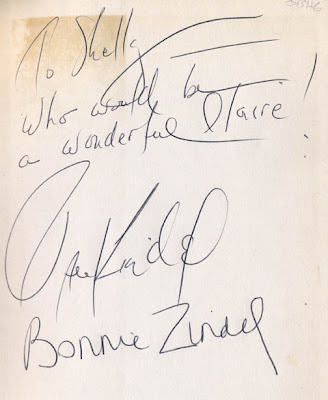
Yesterday I blogged about collecting coathangers, stickers, bookmarks, and other items given away free to promote children's books.
The keyword in that sentence is "free."
Today I want to talk about a type of collecting that's decidedly not free. In fact, it's downright expensive.
I'm talking about collecting original art from children's books.
I should admit that I have many more novels than picture books in my collection. Given a choice, I'd pick Newbery over Caldecott, RABBIT HILL over THEY WERE STRONG AND GOOD, Scieszka over Smith. In fact, my favorite children's book art isn't found in a lushly colored picture book, but rather in the inky, comically expressive black-and-white drawings by Louis Darling that illustrated most of Beverly Cleary's books in the 1950s and 1960s. How I'd love to have one of those illustrations on my wall! One of these days when I need a good rainy-weekend project, I might photocopy a couple of my favorite Darling drawings, stick them in cheap plastic frames, and put them on display.
I just don't have the kind of money necessary to acquire original children's book art. A quick trip around the internet turns up an Ernest Shepard drawing from THE HOUSE AT POOH CORNER that costs about the same amount I make each year. There's also a Dr. Seuss watercolor selling for 1.5 times my annual gross salary. We won't even discuss the Maurice Sendak illustrations currently for sale.
There used to be a gallery selling original children's book art in one of our most exclusive suburbs. One Saturday morning I attended an author event at a bookstore in that snobbish suburb and, as I stood waiting to have my books signed, I saw a lady making her way down the line behind me. "If you're interested in children's books," she'd say, handing out a business card to each person in line, "you might like to visit our gallery, which features original artwork by some of today's best illustrators!"
I've always heard that wealthy people can look at other wealthy people and immediately tell whether they're "old money" or "new money." I don't know if that's true or not, but I know from personal experience that they can immediately tell whether you're "MONEY!" or "NO MONEY!" Because when this woman reached my place in line, she gave me a single glance and then made a WIDE circle around me and began working the front of the line. She didn't invite me to visit her gallery. Didn't hand me a business card. I could almost read the thought bubble over her head: "NO MONEY. Probably the type who Xeroxes pictures of Henry Huggins and Beezus, frames them, and calls it art!"
Well, I have to admit I was hurt. But it made me determined to have at least one piece of children's book art in my collection...so I went shopping at that great marketplace for the common man -- eBay! Within a week I found a wonderful little illustration of Santa Claus that had originally appeared in a children's book. So what if I didn't know the illustator (Eleanor Dart) or the book (A LITTLE COWBOY'S CHRISTMAS, Wonder Books, 1951)? The price was right (about twenty bucks) and it really is a charming picture.
I actually now own one other piece of original art that I love. I have a copy of Holling Clancy Holling's 1949 Newbery Honor Book SEABIRD in which the author-illustrator has sketched a full-page pencil illustration. When I first saw this book, I assumed it was one of the book's regular illustrations because it was so finely drawn. It took me a while to realize that this page was normally blank (except for the word "SEABIRD" printed on it) and that Holling himself had added this beautifully-detailed beach scene. (You can click on the image for a closer look.) Converting it to jpg in order to post it here has made the picture lose a bit of its subtlety, but looking at in real life, you can practically hear the waves crashing on the rocks and smell the seaweed and saltwater. And I wouldn't trade this drawing -- or the book that contains it -- for any of the fancy illustrations ever displayed at that snooty suburban gallery.










































